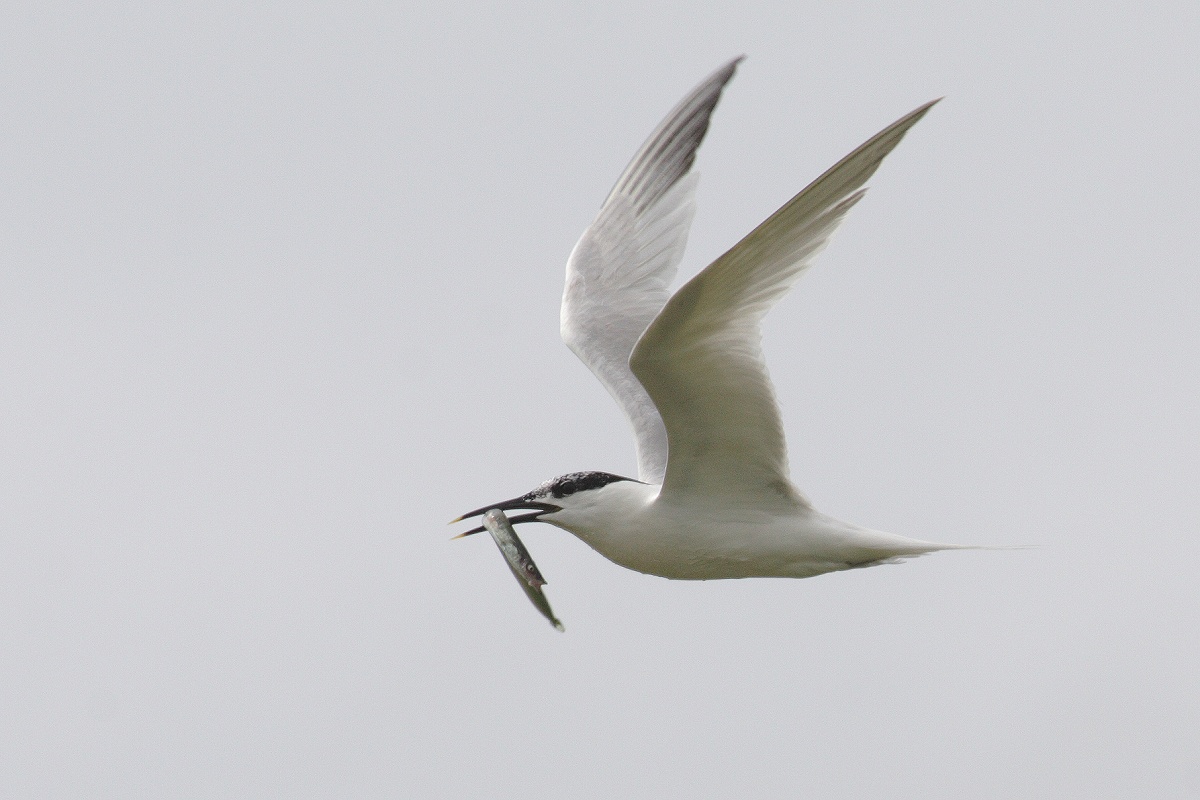Overview
Abstract: Using a cause-effect chain model to determine the effects of sand mining on Sandwich terns. Dredging leads to an increase of silt concentrations in the water column, which makes it more difficult for Sandwich terns to catch fish. This in turn can cause a decrease in breeding success.
Landscapes: Sandy coasts
Technology Readiness Level: 3 (experimental proof of concept)
Keywords: Coastal development, Ecological studies, Impact assessment, Sand mining
In the Netherlands, the potential impacts of sand mining activities on populations of Sandwich terns form an important topic in Environmental Impact Assessments (EIAs). Sand mining causes an increase in water turbidity, which may affect populations of visually hunting birds such as terns.
The quantification of ecological effects in EIAs is mostly done by deterministic modeling of cause-effect chains; a highly conservative approach with an unknown uncertainty margin. A probabilistic approach to the quantification of the possible ecological effects may be an alternative.
The objective of this case study is to explore how and to what extent a probabilistic approach can be applied to the quantitative modeling of the potential effects of sand mining on tern populations. As an example, the probabilistic methodology is worked out for the effects of a fictitious dredging project on a population of Sandwich Terns.
Project Objective
The objective of this case study (van Kruchten & van der Hammen, 2011) is to explore how a probabilistic approach can be applied for the quantitative modelling of the potential effects of sand mining on tern populations. As an example, the probabilistic methodology is worked out for the effects of a fictitious dredging project on a population of Sandwich terns (Sterna sandvicensis).
Project Solution
To assess the impact of an activity on the environment, investigators often deal with limited knowledge about possible effects. Consequently assumptions have to be made. In general, the foundation of the methods that were used in the past to estimate impacts on tern populations quantitatively is very limited. A probabilistic approach gives insight into the probability of occurrence of certain impacts. This prevents accumulation of worst case assumptions yielding unrealistic negative impact estimates of an activity. Not only does a probabilistic approach enable more realistic impact estimates, it also quantifies the uncertainty of this impact. Moreover, it shows the influence of natural dynamics on the uncertainty margins. This also contributes to one of the basic steps for generating Building with Nature development & design solutions: understanding how the system functions.
Governance context
Prior and during marine construction activities like dredging, proponents need to ensure authorities that the dredging activities are performed in an environmentally acceptable manner. For most dredging projects an Environmental Impact Assessment (EIA) is made, often specified and required by law or regulation. An EIA regularly contains an assessment of the potential effects of the project. In the Netherlands, the potential impacts of sand mining activities on tern populations often form an important topic in dredging-related EIAs. Probabilistic analyses as demonstrated below can be used to assess potential effects of dredging activities on the Sandwich tern.

